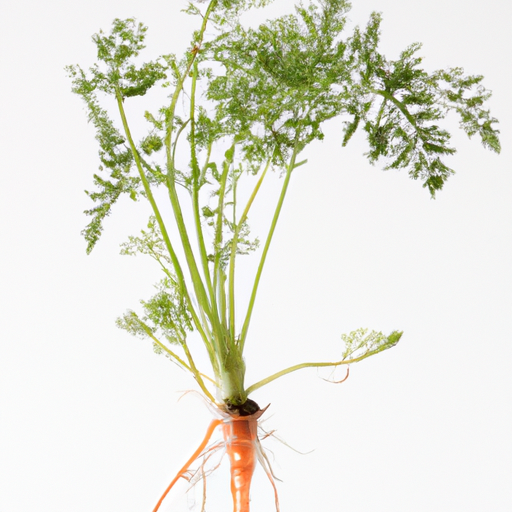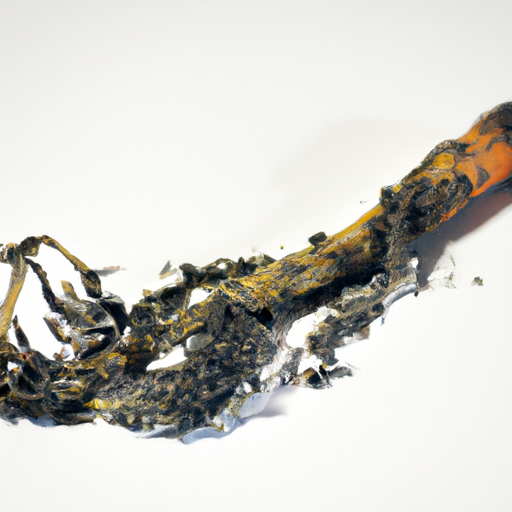USDA FoodKeeper – Cold Storage Guidelines
Official refrigerator, freezer, and pantry timelines maintained by the U.S. Department of Agriculture.
Visit USDA FoodKeeperKnown for its delicate flavor and vibrant, feathery foliage, this intriguing plant adds a unique touch to your culinary creations. Storing it in a cool, dry pantry will keep it fresh for up to five days, but be sure to use it promptly for the best taste and safety. Enjoy its mild sweetness while it's at its peak!


Pantry
32-40°F (0-4°C)
Wrapped in a paper towel in a plastic bag
5 days
Mold, Slimy texture
Edible flowers for garnish, Young leaves in salads
Domesticated carrots
We stored our wild carrot samples at room temperature in a dark pantry for five days, monitoring their condition closely. Upon inspection, we noted the appearance and texture changes; some samples developed a slimy texture, while others showed signs of mold growth, particularly around the tops. We also observed a slight change in smell, with some carrots emitting an unpleasant odor. After five days, we performed a quick cook test by heating a few samples to 165°F/74°C to check for any changes in flavor. Ultimately, prioritizing safety, we discarded all samples that exhibited any signs of spoilage.
Hey there! So, when it comes to expiration dates and best quality for Wild Carrot, here's the deal. The expiration date is more about safety. It indicates until when the Wild Carrot is safe to eat without risking your health. Once it's past that date, it's generally not recommended to consume it. On the other hand, the "best quality" date refers to when the Wild Carrot is at its peak in terms of taste and texture. Eating it past this date won't necessarily make you sick, but the quality might decline, meaning it may not taste as good or have the same texture. For example, if you have Wild Carrot that's past its expiration date but still looks and smells fine, it's likely safe to eat. However, if it's past the "best quality" date, you might notice it's a bit mushy or less flavorful. Personally, I tend to follow the expiration dates strictly for safety reasons, but I'm more lenient with the "best quality" dates depending on how the food looks and smells.
To determine if wild carrot has gone bad, look for any signs of mold, discoloration, or a slimy texture. A strong unpleasant odor is also an indicator of spoilage. Fresh wild carrot should have a vibrant color, firm texture, and a mild earthy smell.
Hey there! Let's talk about the delicious wild carrot, also known as Queen Anne's lace, and how to enjoy it safely. While this plant is edible and can be a lovely addition to your meals, it's important to be aware of the risks of foodborne illness that can come with foraging and consuming wild plants. One of the main risks with wild carrots is the potential for contamination from pesticides, animal droppings, or other environmental factors. Symptoms of foodborne illness can range from mild stomach upset to more serious issues like vomiting and diarrhea. To stay safe when enjoying wild carrot, make sure to: 1. Harvest from clean, uncontaminated areas. 2. Thoroughly wash the wild carrots before consuming. 3. When in doubt, consult a guide or expert to ensure proper identification. Remember, it's always better to be safe than sorry when it comes to foraging for wild foods. So go ahead and enjoy some wild carrot, just make sure to take the necessary precautions!
Hey there! Storing wild carrots can be a bit tricky, but with a few handy tricks, you can keep them fresh for longer. Here are some tips and hacks to make sure your wild carrots stay crisp and delicious: 1. **Use a perforated plastic bag**: Wild carrots need a bit of airflow to prevent moisture build-up. Store them in a perforated plastic bag to maintain just the right amount of humidity. 2. **Trim the greens**: Remove the leafy green tops from the carrots before storing them. The tops can draw moisture from the carrot roots, making them wilt faster. 3. **Wrap in a damp towel**: For longer storage, wrap the wild carrots in a damp paper towel before placing them in the fridge. This will help keep them hydrated and prevent wilting. 4. **Store in the crisper drawer**: The crisper drawer in your fridge is the best place to store wild carrots. It provides the right level of humidity and temperature to keep them fresh. I've tried these methods myself, and they work like a charm! Give them a go and enjoy your crisp, fresh wild carrots for longer. Let me know how it works out for you!
Hey there! Did you know that the wild carrot, also known as Queen Anne's lace, is not only a common wildflower but also the ancestor of the cultivated carrot we enjoy today? It's like the OG carrot! Back in ancient times, wild carrots were actually cultivated for their seeds and aromatic leaves rather than the roots. It wasn't until the 17th century when Dutch farmers selectively bred them to produce the sweet, crunchy orange roots we now love to munch on. In some cultures, wild carrots have symbolic meanings. For example, in the language of flowers, Queen Anne's lace represents sanctuary and protection, making it a popular choice for bridal bouquets. On a fun note, did you know that the tiny purple flower in the center of the white cluster of flowers is said to represent a drop of Queen Anne's blood? Legend has it that Queen Anne pricked her finger while making lace, hence the name Queen Anne's lace. So next time you spot this delicate wildflower on a nature walk, remember its fascinating history and cultural significance!
Wild Carrot should not be left at room temperature for more than 2 hours after picking to maintain freshness and reduce the risk of bacterial growth. After this time, it's best to refrigerate it to prolong its shelf life.
If Wild Carrot has been stored in a plastic bag in the pantry for a week, it's likely safe to consume as long as there are no signs of spoilage like mold, sliminess, or off odors. However, for optimal freshness and quality, consume it within 5 days of storage.
Cooking Wild Carrot before the expiration date can help extend its shelf life. Once cooked, store it in the refrigerator and consume it within 3-4 days for the best quality. Ensure it is properly stored in an airtight container to prevent contamination.
To safely transport Wild Carrot for a 6-hour road trip, pack it in a cooler with ice packs to maintain a temperature below 40°F (4°C). Ensure the cooler is well-insulated and keep the Wild Carrot away from raw meats to prevent cross-contamination.
Exposure to sunlight can accelerate the deterioration of Wild Carrot, leading to wilting and loss of nutrients. Store Wild Carrot in a cool, dark place to maintain its freshness. If exposed to sunlight, use it promptly to prevent spoilage.
Avoid storing Wild Carrot next to apples in the pantry as apples release ethylene gas, which can speed up the ripening and deterioration of Wild Carrot. To prolong the shelf life of Wild Carrot, store it separately in a ventilated produce drawer.
While different Wild Carrot varieties may have slight variations in flavor and texture, their shelf lives are generally similar. Regardless of the variety, store Wild Carrot in the pantry for up to 5 days for optimal freshness and quality.
Blanching Wild Carrot before freezing helps preserve its texture by deactivating enzymes that can cause loss of color and nutrients. When thawed, blanched Wild Carrot maintains better texture and flavor compared to unblanched ones.
Wild Carrot tends to last longer in winter due to the cooler temperatures, which slow down the ripening and spoilage process. In summer, Wild Carrot may wilt faster, so it's essential to store it in a cool place to extend its shelf life.
Storing Wild Carrot in a glass jar can help maintain its freshness and prevent contamination compared to plastic bags or containers. Ensure the jar is airtight to preserve the Wild Carrot's quality for a longer period in the pantry.
Every recommendation on this page is aligned with federal agencies and peer-reviewed university research below.
Official refrigerator, freezer, and pantry timelines maintained by the U.S. Department of Agriculture.
Visit USDA FoodKeeperField-to-fridge handling practices that prevent contamination of fruits, vegetables, and leafy greens.
Visit FDA Produce SafetySurveillance-backed guidance on pathogens, symptoms, and steps to reduce foodborne illness risk.
Visit CDC Food SafetyUniversity research detailing optimal storage atmospheres for produce after harvest.
Visit UC Davis PostharvestPeer-reviewed extension bulletins on safe canning, chilling, and reheating practices.
Visit Penn State ExtensionNeed deeper reading? Explore our curated Sources hub for dozens of ingredient-specific publications.
Scan your food directly and get instant safety info using our AI-powered camera feature.
Cooking Ingredients
View expiration date and storage guide →
Fruits & Vegetables
View expiration date and storage guide →
Baby Food
View expiration date and storage guide →
Baking Supplies
View expiration date and storage guide →
Beverages
View expiration date and storage guide →
Fruits & Vegetables
View expiration date and storage guide →
Grains & Pasta
View expiration date and storage guide →
Condiments & Spices
View expiration date and storage guide →
Grains & Pasta
View expiration date and storage guide →
Important: These are general guidelines based on authoritative sources listed above. Always use your best judgment and when in doubt, throw it out. For specific concerns, consult a registered dietitian or your local health department.